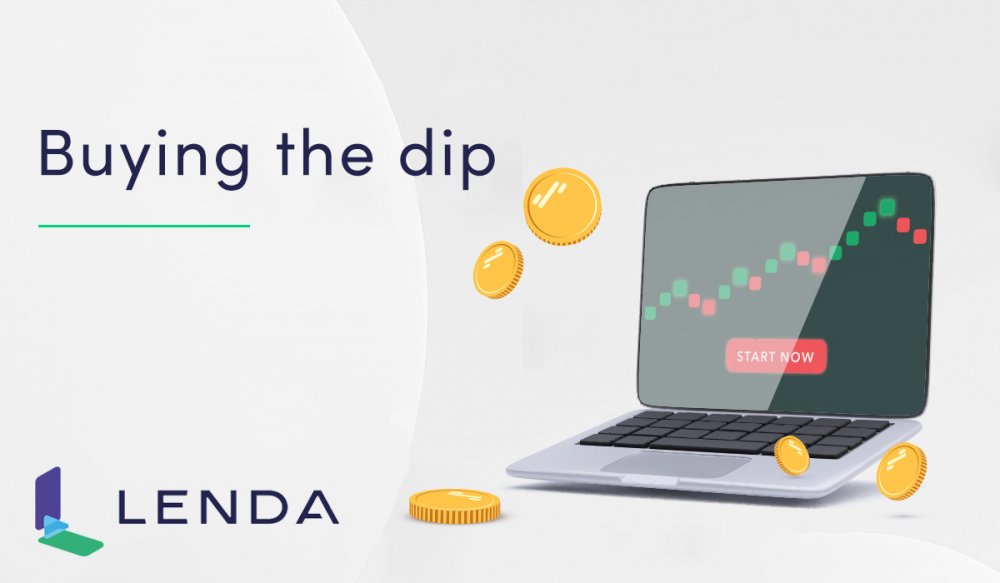Should you buy the dip? This question comes on the heels of demand following the current development of the crypto market and the ongoing discussions about its recovery.
Well, as simple as it sounds (and it really is!) – jumping into a token after it’s fallen and selling it later when the market corrects itself, thus benefitting from the price recovery – the strategy has its pros and cons and if you’re willing to adopt it you should mind one straightforward rule – stick to a long-term mentality.
So let’s see the bigger picture and how looking at the market’s worst-performing tokens may become a place to find potential future winners.
What goes up must come down
The fundamental philosophy behind “buying the dip” is that highs and lows play together all the time. When the price has just fallen in a wave down, usually there will be a point where it bounces back up. Generally, this method is far safer to utilize when the market is bullish or in a condition of a stagnant economy rather than in a volatile market. Still, a dark and cold crypto winter provides a huge window of opportunity to keen investors that tap on staking and DeFi yield farming. Both can help level out returns and provide support to ensure your actual crypto balance is constantly growing, even in a bear market or downtrend.
‘Buying the dip’ tips
• Buy the dips works with an uptrend – when a token moves in a generally upward direction, this means that when the price drops, there is a much higher chance it would rise back up. To mitigate the risk, it is better that you use the signal line. If a cryptocurrency has a known uptrend, its lowest point should never cross this line. Once it does, the coin in question might have entered a downtrend, which makes everyone who bought the dips losers.
• Buy the dips to enter a crypto network – when the crypto market experience drop in prices, Staking, as we mentioned above, is one of the best tactics to adopt. Modern cryptocurrencies, including Lenda, use Proof of Stake's validation system. This way, the token holders are able to verify transactions to earn more than what they have in the network and at a much lower cost. It will also coincide with the increase in transaction traffic within that network due to the price drop.
• Buy the dip of well-established tokens – a rule of thumb when utilizing the ‘buying the dip’ strategy in a highly volatile market as the crypto one is to tap on well-established cryptocurrencies. The lowest dip may drop by as much as 99% and still, it may recover and weather the storm of fluctuations. Keep an eye on the token track records to understand how it behaves over time. If crypto is still standing after numerous dramatic episodes, it’s likely to recover from a dip.
‘Buying the dip’ skips
• Buy the dips to average down – if you’re not willing to tame your impatience, buying the dip strategy may result in more significant losses than gains. This technique is basically good for long-term investments and you should have a clear and precise vision of how the asset will behave way down the road. If you have no long-term plans, try not to overcommit to a single coin.
• Buy the dips before… the dip – minding the state of the crypto market now, it is highly improbable to determine if the dip of your favorite coin is a temporary drop or the beginning of a downtrend. In this case, the idea of buying is not a good one unless you do thorough research about the opportunities of the market to correct itself later.
How to understand how long dip lasts
There is a fundamentally helpful tool you can utilize to understand how long a particular dip may last. It was created in Japan more than a century ago and is referred to as the Fibonacci retracement. Its calculation is quite complicated, but there are online calculators that can do this for you. What you should know is only how to apply it in order to benefit from its insights.
What you need is to find the recent significant swing highs and swing lows and connect the highest and lowest point. After you do this, you will see several Fibonacci lines (50%, 78.6%, 61.8%, 38.2%, and 23.6%). So, when you see a sharp decline, you should watch closely at these levels.
If the price moves below 23.6%, it means that bears are in control and you should watch out for the next level at 38.2%. If it moves sharply below this, it is not time to buy the dip. If it starts going upwards after hitting the 38.2%, it could signify that it is time to buy on the dip.
Bottom line
Everyone likes a good opportunity, but each opportunity is as good as what you’re willing to invest in it. More often than not, the best way to take advantage of crypto dips is to perform extensive research upfront and prepare yourself to take a long-term investing approach rather than a short-term one.







